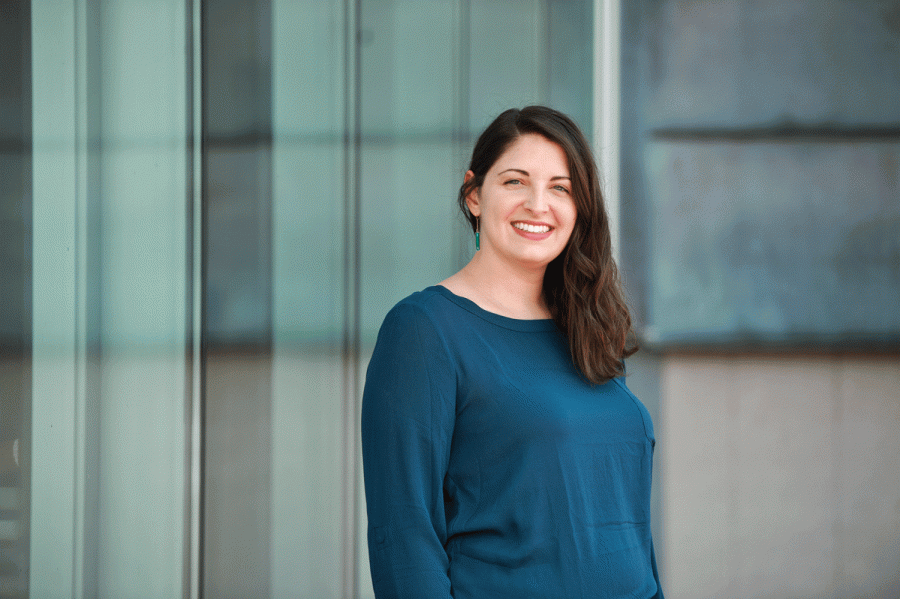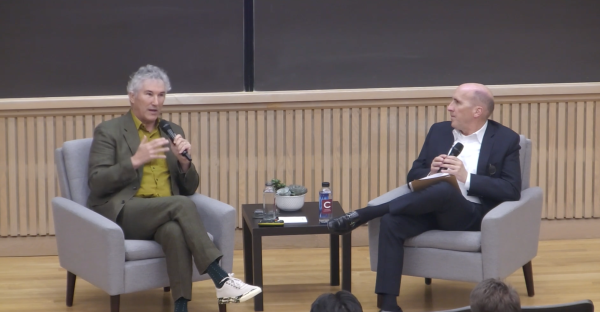“Will There Be Blood?” – Erica de Bruin Talks Coups and Carnage
Assistant Professor of Government at Hamilton College Erica de Bruin discussed the ways in which coups can turn violent. Her lecture focused on the causes and consequences of such violence.
An intimate group of Colgate students and faculty gathered in Persson Auditorium to learn from and converse with Assistant Professor of Government at Hamilton College Erica de Bruin on Wednesday, February 21. De Bruin has conducted extensive research on coups d’état with a focus on those that have turned violent.
Even though coups are common, especially in the developing world, there is a dearth of research regarding the conditions in which they occur. Since 1950, half of the coups that de Bruin has studied involved many fatalities. She partly attributed bloodshed to the “counterbalancing” of the military with other security forces, such as civilian militia and militarized police.
Sophomore Lena Jewett spoke about the concept of counterbalancing.
“When I think of counterbalancing forces, I think of the checks and balances system, which serves a real purpose in America because it safely maintains an equilibrium of power. It’s interesting to think about how something that is so effective in one country, might actually be detrimental and violent in another,” Jewett said.
To explain the nature of a military uprising turned violent, de Bruin walked the audience through the progression and dynamics of a coup. When a typical coup begins, most military soldiers and officers are not yet committed to a particular side, which goes to show that a coup is not necessarily a collective insurrection. Rather, it is often a few individuals seeking to shift the balance of power. The success, and conversely the failure, of a coup depends on how those uncommitted soldiers and officers respond.
In order to minimize rejection and maximize control, coup plotters convince other soldiers that they have already taken power, and that any efforts to squash their plans would be futile.
“Where coup plotters are able to reach their targets successfully, they’re unlikely to face resistance from other officers,” de Bruin said.
She explained that the conspirators broadcast their actions by “capturing symbolic centers of power,” such as the national palace, parliament, television and radio stations. At this point, members of the military would rather join the coup efforts than be on the losing side.
Those who would have preferred the standing regime to remain in power fear execution or other forms of punishment. They also want to prevent intra-military violence, which would undermine morale of the military as an institution.
De Bruin explained that violence is not an ideal tactic for coup plotters.
“Using violence might make them look weak or it might turn popular sentiment against the coup,” de Bruin said.
Junior Neeraj Mahey commented on this analysis of coup violence, or the lack thereof.
“I was surprised to find out that a lot of coup plotters actually don’t intend to disrupt the peace, and prefer to seize power without causing bloodshed. I didn’t know it was actually some force outside of the military that was responsible for most of the violence,” Mahey said.
De Bruin holds the counterbalancing forces accountable for the violent transformation of coups. The presence of multiple armed groups that are all “within range of the targets of coup attempts,” causes a greater sense of uncertainty as to how each actor will respond. This uncertainty provokes violence.
Counterbalancing forces also resort to violence in order to protect its members. Such forces prefer to use violence against groups rather than against its own members.
De Bruin described the 1965 Dominican Republic coup as the archetype for coups that turn violent as a result of counterbalancing forces. Civilian and military coup conspirators intended to overthrow the government in hopes of returning the former president, Juan Bosch, to power.
To quell their efforts, an armed force known as the White Helmets acted as a counterweight to the military. Trained and heavily armed, they were commanded by the acting president, Donald Reid Cabral, and were deeply invested in keeping him in office.
The National Police as well as civilians joined the violence, and by the time the U.S. intervened to bring about a ceasefire, there had been 2,000 casualties.
After explaining why coups turn violent and who is responsible for the unanticipated violence, de Bruin indirectly advised international actors. She urged them to quickly, forcefully and publicly condemn the coup at hand before violence ensues.
“Condemnation has to come early. Even hours difference can make a difference,” de Bruin said. She insists that coup plotters must be made aware that their success is improbable, and that international opposition will occur. “As for the counterbalancing forces, they can work, but the price is high,” de Bruin said.
De Bruin’s research is still in progress as she continues to discover the ways in which coups turn violent, and the ways in which violence can be avoided.
Contact Lucy Feidelson at lfeidelson@colgate.edu.





